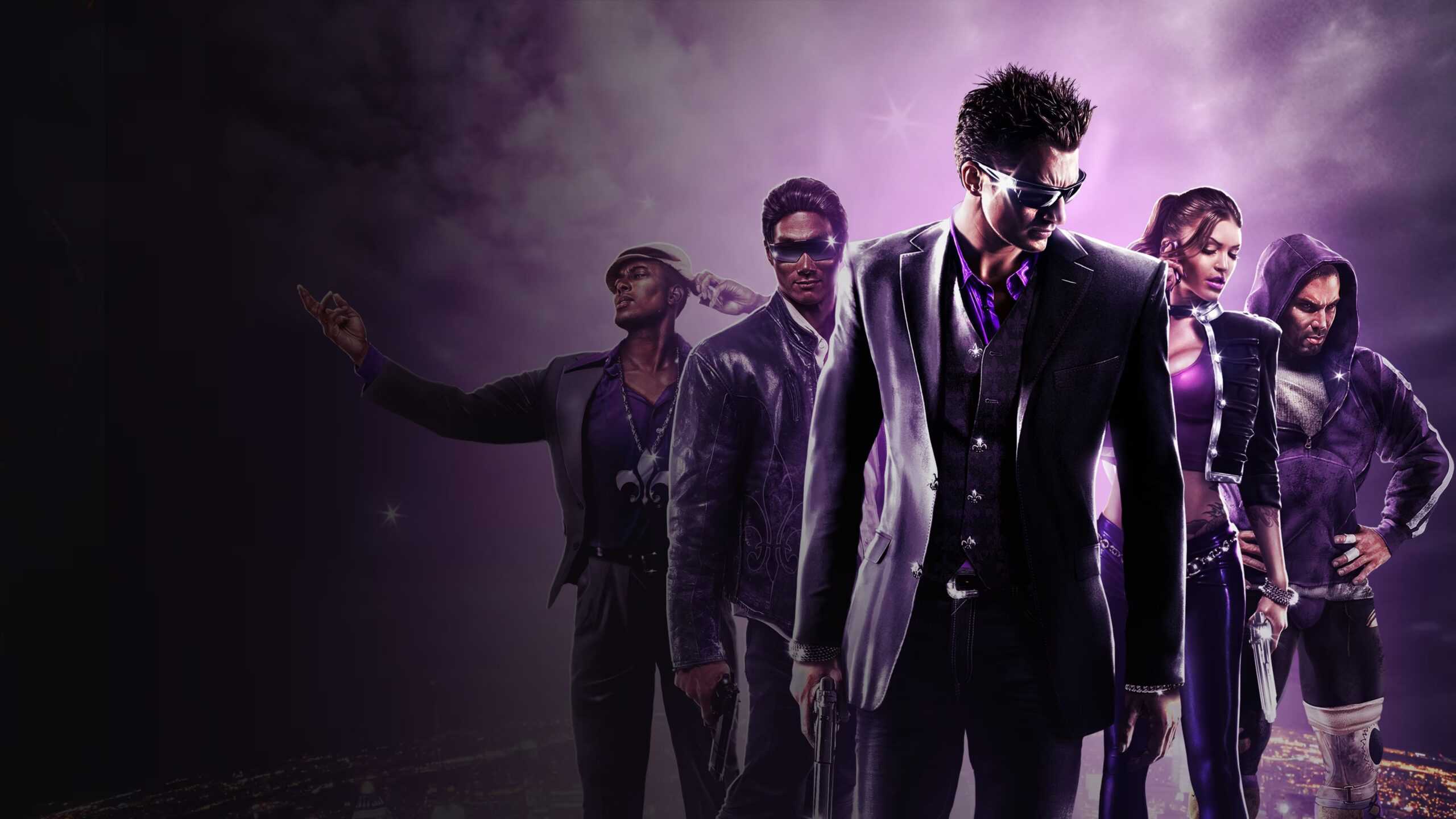The Saints Row series began in 2006 as a new competitor in the open-world genre, looking to compete with Grand Theft Auto. In the early years, it was all too easy to write off the series as a low-budget clone, and it wasn’t until the latter games that Saints Row really found its identity and came into its own.
The games have had just a single developer: Volition. The studio was previously known for its Red Faction games, although in recent years this has been put on the backburner to facilitate the increasing popularity of Saints Row. On the publisher side, the series started life with THQ, which has now shut its doors for good. The latter games in the franchise are published by Deep Silver, best known for the Metro series of games.
At the moment, no one is quite sure what the future holds for Saints Row. Although its peak popularity is likely behind it, the series still has a generation of gamers that remembers just how fun these games can be. If Volition can tap into that once again, it has a chance to thrive in the future.
Saints Row (2006)
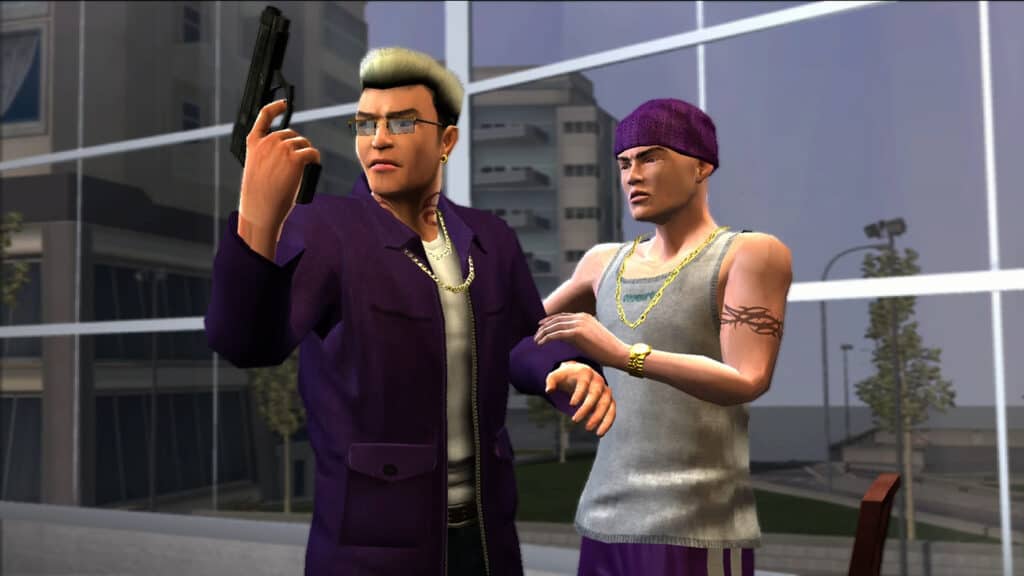
©Screenshot from Saints Row.
Initially developed under the name Bling Bling, Saints Row is an Xbox exclusive that follows the rise to prominence of a lowly gangster as part of the 3rd Street Saints. An open-world title, the game puts you into the city of Stilwater, where you’ll need to sink or swim in the criminal underworld. Campaign missions are unlocked by earning ‘Respect’ points through completing mini-games and side missions. This was a massively controversial choice at the time of release. Like many other games in the genre, you’re able to traverse the world in a variety of ways, although hijacking cars will be your most commonly used approach.
If you’re committing crimes throughout the city, you’ll fill up your ‘Wanted’ meter, which causes the police to chase after you. As the severity of your crimes increases, so too does the police response. The game also features a similar gang meter, which changes depending on which gang you’re provoking at any given moment. This gives it a unique dynamic, as you have to beware of who you cross throughout the city.
As a platform to build upon, Saints Row was a good start to the series. It was raw potential, an engaging world that could become so much more. The main complaint upon release was that it wasn’t original enough, but that would come for the series in good time.
Saints Row 2 (2008)
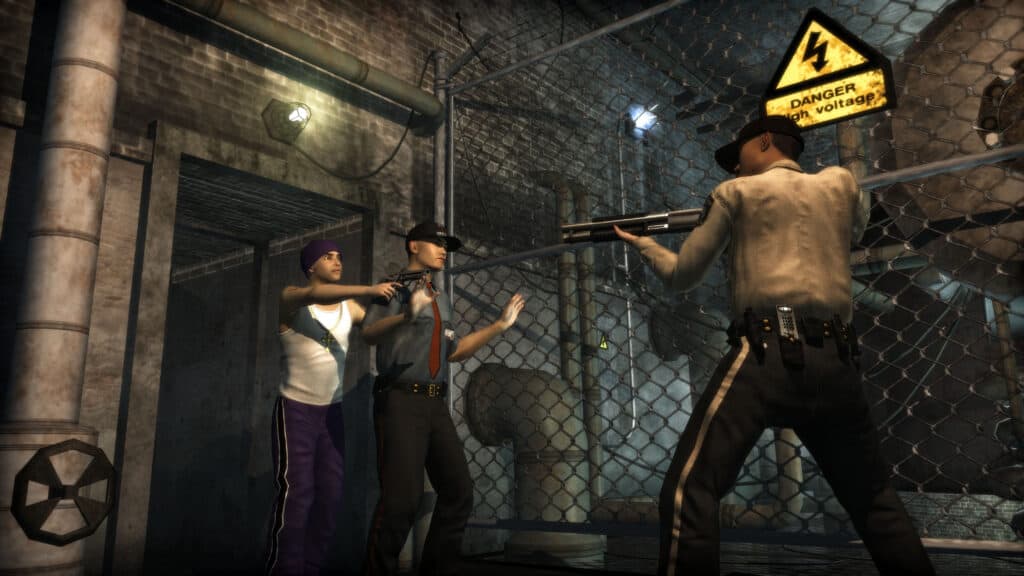
Saints Row 2 was released just two years after the original game, and it shows. Here, Volition opted to take many of the ideas from the original game and slowly iterate upon them. It’s bigger in scale, sure, but at its core, it’s a very similar game. The one big difference is the sense of humor, which is a huge focus for the first time. It’s a great way for the game to differentiate itself from Grand Theft Auto. While GTA hones in on subtle parody, Saints Row 2 is a lot more in-your-face. It’s not worse, but it is different. That said, it’s not over the top in the way some feel later games were. For many fans of the franchise, it was the perfect balance.
In an odd move, Saints Row 2 had a competitive multiplayer mode. This mainly includes a standard deathmatch mode which allowed between four to twelve players to duke it out across Stilwater. Ultimately, its combat mechanics are not where the game shines, so it just feels a little shoehorned in on this occasion. There’s a reason it never made it into any future release, with co-op becoming the main focus instead.
Saints Row: The Third (2011)
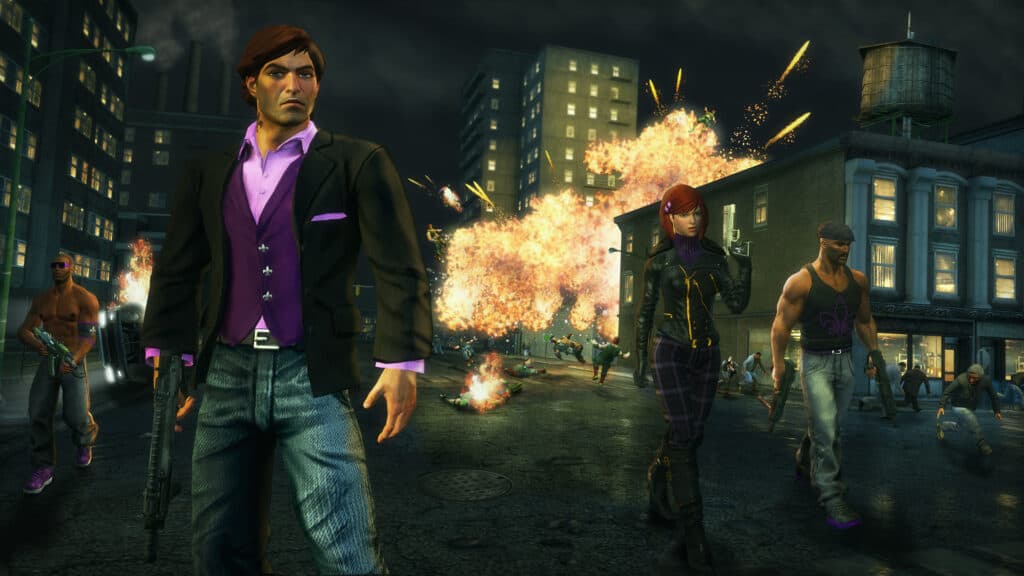
In Saints Row: The Third, you once again play as the leader of the 3rd Street Saints, which has become a multimedia empire of celebrities instead of a street gang. For many, this was the point where the Saints Row series really embraced its zany nature and began to stand out from the crowd, and was widely praised for its overall sense of humor. The story itself was nothing to write home about, although it did offer story-altering choices for the first time. This resulted in different endings for the game, a series first.
The gameplay itself thrives on chaos. You create your own character in an incredibly versatile character creator, and are thrust into the world of Steelport. From here, the game’s sandbox does all the heavy lifting. You can go anywhere, and do anything. Want to throw a fart-in-a-jar stun grenade at a pedestrian, before hitting them with a DDT? Go right ahead!
There are actual objectives and story missions that the game wants you to complete. However, Saints Row: The Third really shines when you’re making your own fun. Best of all, the chaos is totally co-op. The game offers a two-player experience online, allowing you and a friend to experience the craziness together. Every single mission is designed for co-op play, and there’s an argument to be made that it’s a better game like this.
Saints Row IV (2013)
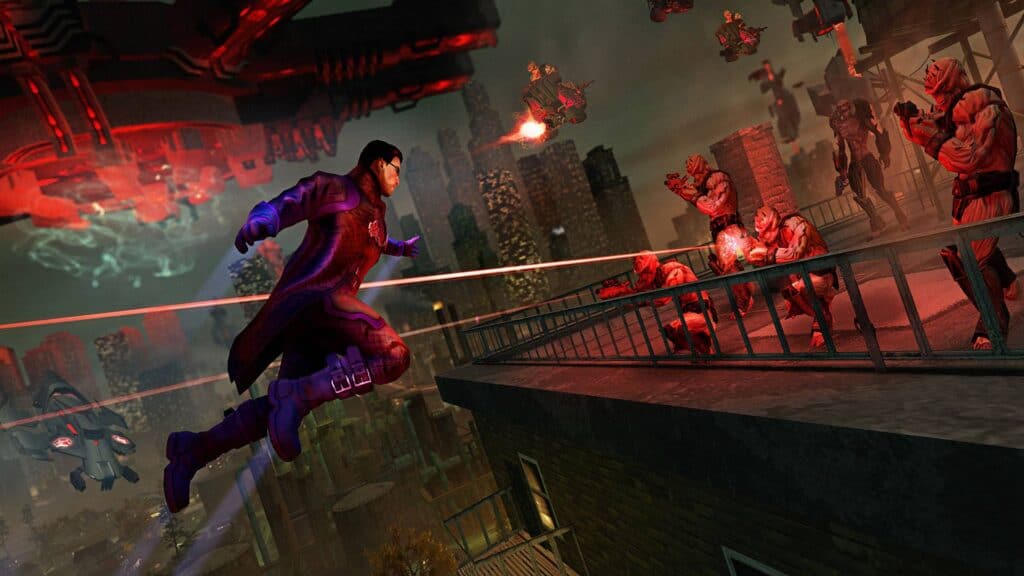
Oh boy. If Saints Row: The Third didn’t quite jump the shark, Saints Row IV cleared that bar by some distance. By this point, any illusion that the series was looking to compete for the Grand Theft Auto audience was fully out of the window. You play as a gang leader-turned-President of the United States(!), looking to repel an alien empire from Earth. Oh, and you’ve got superpowers. And a dubstep gun. It’s every bit as insane as it sounds, but it certainly wasn’t for everyone. Fans who had been with the series from the start were shocked by the direction it had taken, and you can’t really blame them. Everyone has their own idea about what a Saints Row game should be, but for most, this isn’t it.
Saints Row IV uses a virtually identical city to its predecessor, with a touch of verticality added to account for the flight superpower. Many saw this as a sign of laziness, with little effort put into designing a new game world to explore. The game’s difficulty was slammed, too, with the superpowers making it far too easy to complete. Volition didn’t particularly attempt to balance the difficulty in any way – many enemy types designed for Saints Row: The Third were now being killed with superpowers, as opposed to pistols.
It wasn’t perfect, but long-term fans of the franchise still saw the positives. The excessively crude humor of previous games made a return, and didn’t hold back. Despite the craziness of it all, it was coated in a layer of self-awareness that wouldn’t fail to make you smile. In conceding the open-world crown to Grand Theft Auto and jumping the shark for good, Saints Row IV became its own thing, for better and worse.
Saints Row: Gat out of Hell (2015)
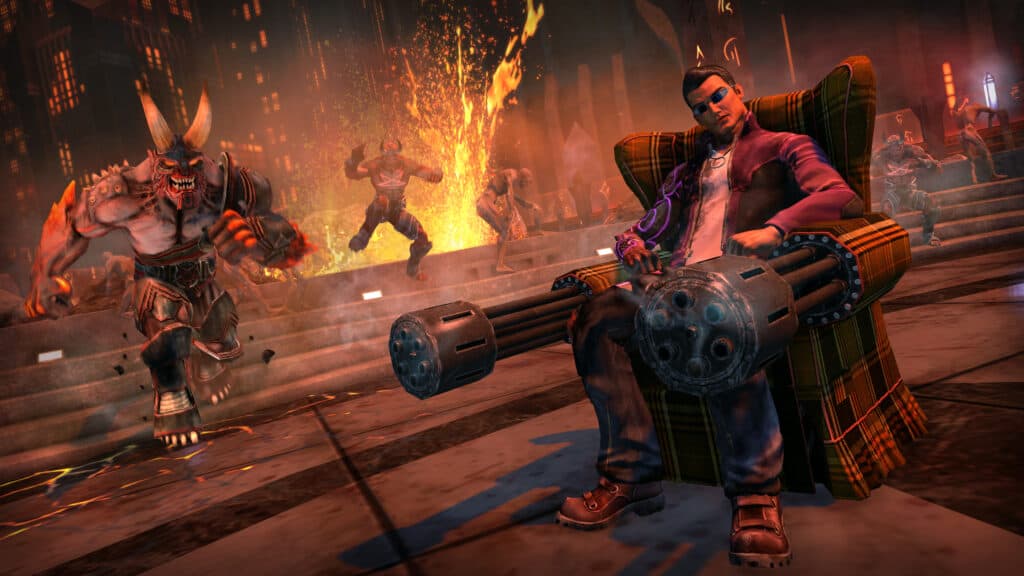
Originally intended to be DLC for Saints Row IV, Saints Row: Gat out of Hell is a standalone expansion that doesn’t require the original game to be played. Focusing on Johnny Gat, one of the main characters from the rest of the series, the game provided an entirely new map to play on, as well as a unique campaign approach without traditional story missions. Instead, players would progress the story by filling a ‘Satan’s Wrath’ meter.
The general gameplay itself closely resembles that of Saints Row IV. Superpowers are replaced with ‘angelic flight,’ allowing you to fly everywhere across the map. This effectively destroys the purpose of cars in-game, but that doesn’t stop it from trying to force you to drive. But why would you, when you’ve got wings? It’s the exact same issue that the previous game had. It gives you too much power, and it makes other parts of the game redundant.
Saints Row: Gat out of Hell is set in Hell, with the main objective being to escape after being kidnapped by Satan. Make no mistake – it’s a game hellbent on continuing the manic precedent set by the previous release. Overall though, it wasn’t a huge fan favorite. Repetitive side content and aged mechanics were the death of the game, and it would be years until the series was finally revisited.
Saints Row: The Third Remastered (2020)
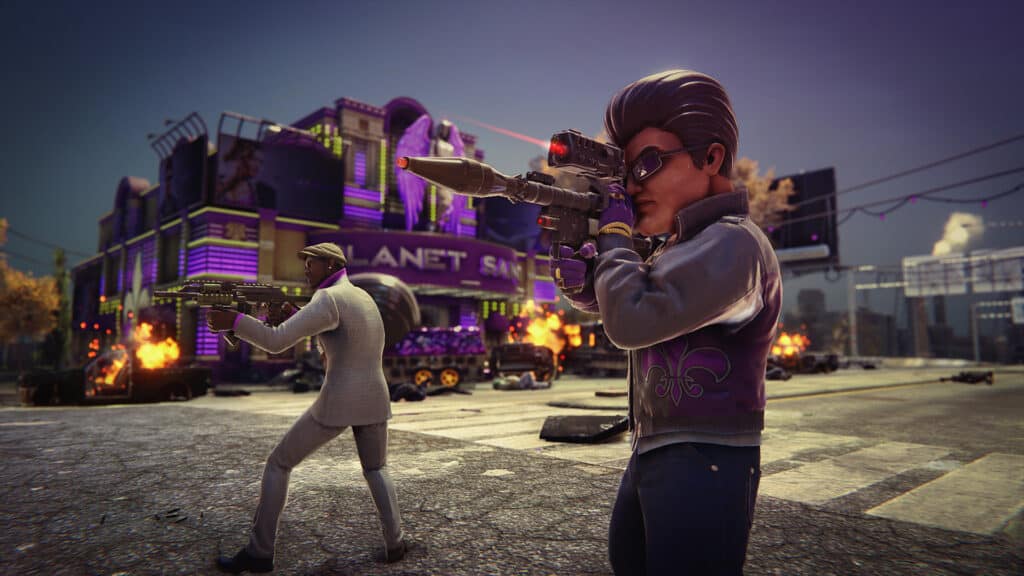
When Saints Row: The Third Remastered was first announced, the reception was split. Of all the games, the third title had perhaps aged the best overall, and it was Saints Row and Saints Row 2 that were most in need of some TLC. However, it did sell the best of the first few games, so if there was a title that gamers were willing to buy once again, it was Saints Row: The Third. Its mechanics still felt pretty solid too, so a whole gameplay revamp wasn’t required to make it worthwhile.
The main change here was a fresh coat of paint, and admittedly it’s a staggering difference. Everything from the textures, 3D models, and lighting was given an upgrade, while keeping the core game exactly the same as it was in 2011. There’s no doubt that it’s the definitive way to play the game.
Despite this, not everyone was entirely pleased with the remaster. It was mired with a series of technical issues, with locked framerate in cutscenes proving to be a jarring experience. On top of this, licensing issues meant some songs from the in-game radio were removed. Even if it wasn’t perfect, Saints Row The Third Remastered still holds up today. If you’re looking to pick up one version of the game, we’d definitely recommend the remaster above the original.
Saints Row (2022)
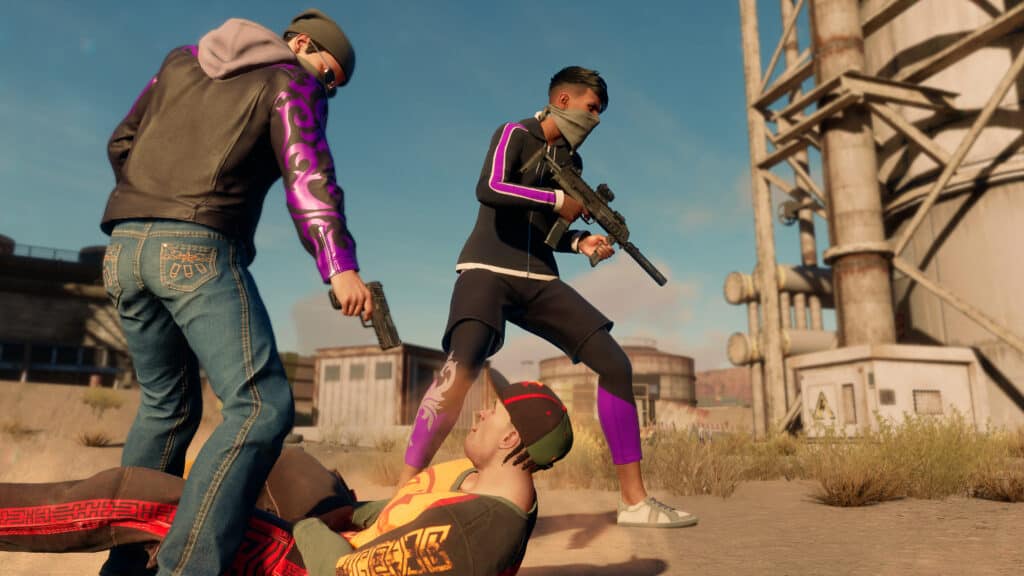
After the critical and commercial catastrophe of 2017’s Agents of Mayhem, Volition went back to what it does best. Saints Row was back, rebooted with a more grounded tone. Gone were the superheroes and superpowers. Instead, we got the return of the lowly street gang looking to make a name for themselves. Sounds like a perfect return to form, right?
Wrong. Critics and fans alike hated Saints Row, with everything from the writing, tone, and technical issues taking flak. For a 2022 release, the mechanics were practically ancient, resembling a game from a previous console generation. It wasn’t pretty, and by attempting to appeal to everyone, Volition managed to appeal to no one. The only saving grace was that the world of Santo Ileso was genuinely fun to explore. It just wasn’t enough to salvage the experience for most gamers.
As a reboot, Saints Row was supposed to signal a huge return for the series. After all, there hasn’t been a new Grand Theft Auto title in a decade, so there’s a market gap. Yet despite this, there’s a feeling the reboot may have killed the franchise for good. Volition has yet to confirm its future plans, but hopefully we see another opportunity for a return to form in the years to come.
The image featured at the top of this post is ©THQ.
